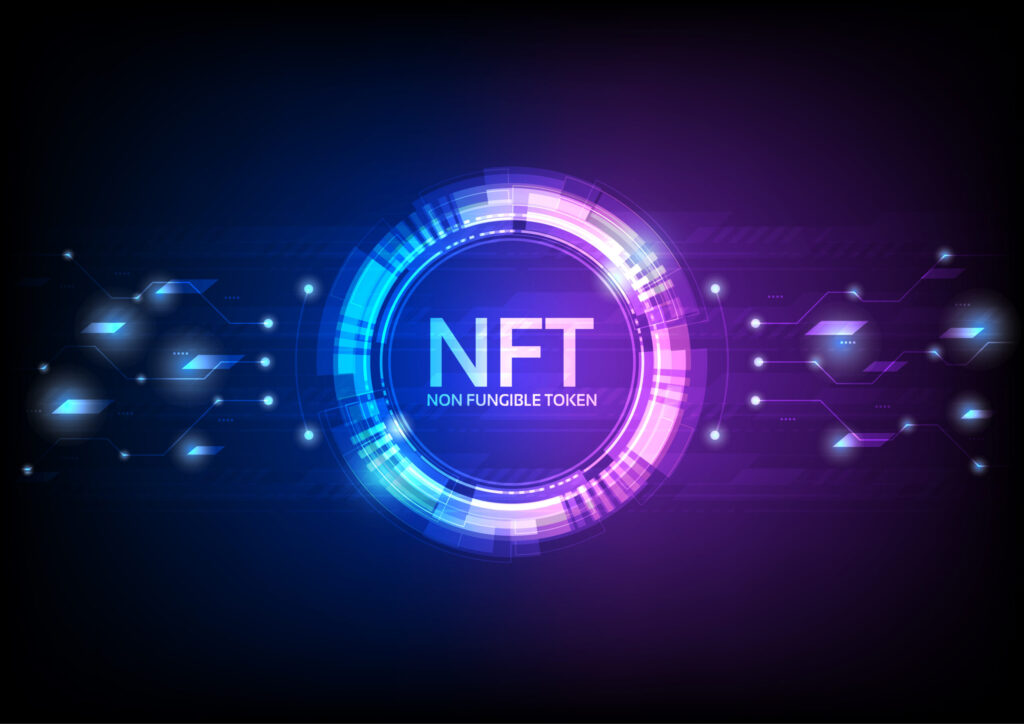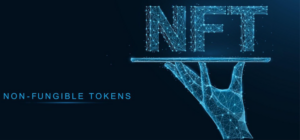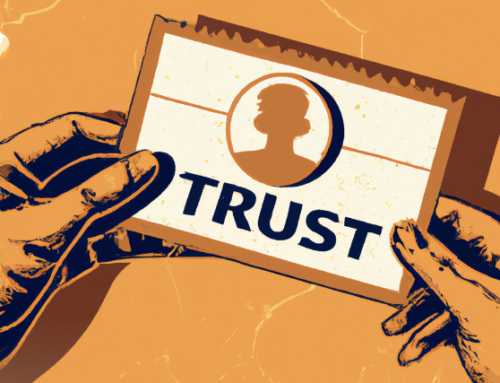by Jeff Milligan, Vice President, Customer Success, Web3 Pro
Marketing professionals today are increasingly including NFTs in their brands’ media campaigns as the new media landscape expands and evolves toward the next era of digital marketing, Web 3.0. According to HubSpot research, in fact, 14 percent of content and media planners today have positions in their communications mix strategy for non-fungible tokens. Among brand marketers already using NFTs, 39 percent claim that these digital assets provide the best ROI of any channel in their media mix. These figures highlight the growing interest in and utilization of NFTs in brand marketing.
While 14 percent of these respondents say they are planning for NFT marketing, what does that say of the nearly 86 percent who are not planning for it? The reason is currently unclear, but it is logical to guess that the range of potential answers may include everything from “It’s too soon” to “I don’t understand it” to “How’s it going to help me sell more of my product or service?” If your brand is considering creating an NFT offering but haven’t yet started, you may be in one of these camps. You may wonder what the benefits of such an investment may be.
NFTs Provide a Unique Opportunity for Brands
Like any marketing opportunity for which you must plan, there are risks and rewards to assess. Your NFT marketing strategy must consider how to integrate digital tokens into your overall brand marketing campaign, along with key performance indicators (KPIs) to measure your project’s ROI.
In considering the “Why should we” NFT marketing question, Lomit Patel, senior vice president of growth at Together Labs, offers answers. Patel likens NFTs to social media in that both channels offer brands the opportunity to build reach and one-to-one relationships with their target customer communities. Both create shareable conversations and engagement in a way that can’t be otherwise achieved. And just like those early adopter brands that jumped into social media early and gained clout, many brands are pursuing the same goal by embracing Web3 marketing now. Entering the NFT space in 2023 could provide brands with early-mover advantages over competitors before NFTs become more mainstream in 2025 and beyond.
In 2023, the NFT/Web3 community is small, but so it was with LinkedIn in 2003, Facebook in 2004, YouTube in 2005, Twitter in 2006, Instagram in 2010, and TikTok in 2016. Many outside observers viewed those early adopting users as odd and the time spent on those platforms as frivolous.
Facebook initially launched as invitation-only for college students. Growth occurred through community member invitation. A passionate niche audience was exponentially expanded through the network effect of word-of-mouth sharing and personal invitations. In embracing Web3, brands should realize that they may be initially targeting a select group, but that this group will be a catalyst for rapid organic content sharing. Outbound invitations and inbound acceptance can potentially accelerate at an astounding velocity. A hit is not assured with every at-bat, but home runs will happen and many will win the game.
Due to the inherent scarcity of NFTs, brands can better engage with their niche communities of token collectors and investors, potentially converting them into elite ambassadors and influencers. Membership in such a “club” can provide exclusive awards and access not available to others – loyalty discounts, early order privileges, community meetups, exclusive VIP events, special content, education, and more. Whether the brand is more than 100 years old, like Louis Vuitton, or a newcomer to the market like Bored Ape Yacht Club, there is an opportunity to expand brand reach and generate excitement among NFT collectors as well as those unfamiliar with digital tokens.
Tips to Integrate NFTs into Your Brand Campaign
To effectively integrate NFTs into your brand campaign, you need a plan that includes a budget, scope of work, measurable goals, brand alignment, KPIs/metrics, sales team alignment, and customer support.
1. Tie NFTs to your Brand Essence
It’s imperative to integrate NFTs into the essence, ethos, and voice of your brand. Would an established mainstream, built-on-trust brand like Fidelity Investments do well to align itself in the market to a fringe NFT like CryptoPunks? Would a brand like Tylenol launch an NFT like Edgy Veggies? Probably not.
Simply dropping an NFT to say your brand has entered the Web3 space may seem like an interesting promotional gimmick, but a failure can create immense damage. Your NFT marketing strategy must align with and augment your brand image in the same way any ad, sponsorship, or endorsement would.
One approach is the path that Jacob & Co. took with its Astronomia Metaverso watch collection. This project pairs its physical watches with NFT versions that complement one another. Customers who purchase one item of the collection with the physical and digital versions of the watch can wear the timepiece IRL (in real life) and display it online, providing a true brand tie-in across all platforms and experiences.
Another idea to consider is enhancing a traditional loyalty program with NFTs. In the fall of 2022, Starbucks tied NFTs to its already popular rewards program with the creation of a digital “third place.” When the Starbucks brand launched, the idea behind the coffee shops was to be not just a place to drink coffee but to be “a third place” between one’s work and home. Now, with the integration of NFTs, the brand will take that third place to the digital realm, rewarding members with NFTs rather than the traditional stars the legacy program had been using. Customers’ loyalty is now rewarded with exclusive benefits and perks which they can use, save, or resell on a secondary market that generates additional royalties for Starbucks.
A more avant-garde approach was taken by luxury brand Louis Vuitton, who created a game to introduce a new generation to its legacy, rewarding players’ efforts with NFTs. Now in its second iteration, the game has garnered more than two million downloads and continues to be popular among Generation Z users, its intended target audience. With a growing membership, Louis Vuitton now has multiple opportunities to create brand awareness and additional events that expand excitement.
2. Budget Appropriately for your NFT Campaign
When it comes to budgeting for an NFT campaign, there are three main expenses to consider:
- The cost of creating unique NFTs
- The cost of marketing the campaign
- Peripheral costs
Costs for creating NFTs can vary widely depending on the complexity of the design and whether the art is created in-house by algorithms and internal team members or if the brand chooses to contract with a well-known digital artist. At the low end, the investment could be nearly zero, while the upper limit could be in the tens of thousands of dollars. For an initial launch, some brands choose to go with a lower budget, expanding as the viability of such efforts are identified.
The marketing campaign, likewise, can have varying costs. Pairing with a company that specializes in creating NFT go-to-market campaigns, such as Web3 Pro, carries an investment similar to other, more traditional marketing efforts. Most NFT campaigns will include email marketing, content marketing, and social media marketing, as well as public relations and outreach efforts. If these cannot be done in house by the brand, a white-label NFT marketing agency must be contracted to manage the campaign.
Peripheral costs associated with launching an NFT campaign may include creating landing pages associated with the drop (including SEO efforts to drive traffic), posting the NFT on a marketplace, and securing influencers to share the message. Although budgets for NFT campaigns can vary, you may plan to invest in the range from $10,000 to the high six figures for the entire run.
3. Develop Metrics for the Brand Campaign
While revenue may seem at first to be the key metric for success in an NFT brand campaign, the real benefit to digital asset campaigns is the community built around the drop. Comparing traffic and sales pre- and post-launch can help brands quantify the incremental brand lift generated by the community-building efforts.
Metrics are determined by the goal of the campaign. While one company may look at launching a new partnership using NFTs to track rewards, another may want to revitalize an existing loyalty program, like Starbucks Odyssey. Yet another may hope to create raving fans and generate increased word of mouth through community development and earned media coverage. When a brand seeks to achieve all things with one drop, the campaign often fails. That’s why it’s important to set a few clear goals and metrics before entertaining the idea of launching an NFT campaign.
4. Capitalize on Resale Opportunities
One area in which brands may not yet have a hold is the resale of digital assets. In the physical world, some luxury automobile makers, such as Lexus, offer certified pre-owned cars, for example. That same approach could work equally well in the digital world.
In most cases, the assets that warrant certification by the original manufacturer hold their value over time. Certainly, NFTs meet that criterion. By incorporating a certification or seal of authenticity into the sale of NFTs, brands can create a more powerful transition as that asset changes owners. Plus, if the NFT company of origin knows about the sale, it can easily transfer benefits to the new owner and expand brand awareness.
This may seem like an aspect that doesn’t need to be considered upon the launch of a new NFT campaign, but companies that will create excitement into the future should develop campaigns that accompany the lifecycle of the NFT.
Creative Toolkit for NFTs
Before a brand can enter the NFT marketplace, it must have a plan of action. Whether developing the campaign internally or engaging with an outside agency, certain aspects must be part of the creative toolkit for launching and marketing an NFT campaign. These include the basics:
- Identify the target market for the campaign
- Determine which channels are best for reaching that target market
- Create content for all stages of the buyer’s journey, from launch to post-sale, across various media platforms
Naturally, these components are the foundation of any successful brand campaign, regardless of whether it is a tangible product or an NFT. Too often, though, brands jump on the latest and greatest idea with little strategy behind how to truly capitalize on that new platform. Then, when the campaign is unsuccessful, they feel defeated and don’t pursue that avenue again—at least not until it has been tested by other brands.
In addition to a marketing toolkit for an NFT campaigns, brands should strategize about what type of NFT will be offered and what benefits will be associated with its purchase. Will your company simply sell the artwork and let it go? Will buyers have access to exclusive content, discounts, and rewards? Or is there another goal in mind? The answers will determine what kind of artwork should be offered.
Lamborghini’s initial NFT offering paired five real-life art pieces with digital counterparts, incorporating digital fiber that had been sent into space in the NFTs. Their goal was to make a statement with their entry into the NFT realm, rather than to provide any long-term membership benefits, but they plan to expand on what they do provide as they move forward with future campaigns.
Conclusion
However a brand chooses to integrate NFTs, it’s important to leave space for experimentation and learning. Most brands won’t get it right on a first outing, but there’s something to be said for starting off. Trying a new approach can have varied outcomes and keeping track of data will help brands to move forward more strategically. The goal is to determine what strategies and tactics fit that brand and its customers best—and then keep integrating more NFTs or adding new utilities into the mix as appropriate.
At their essence, NFTs offer another way to interact with customers—a way that brands have ownership over, as opposed to the more transient “rented” relationships found on Web2 social media platforms. While digital assets may never replace direct mail, social media marketing and email marketing entirely, they do offer a unique and appealing way to connect with the brand’s target market. Getting in on the trend now will just provide the brand with a more competitive edge moving forward.
There are other metrics that should be incorporated into the analysis of the campaign as well. These center around the buyer’s journey and may include:
- Reach, or number of impressions (on social media sites, owned website, and auction site)
-
Number of registered users for a drop
-
Community engagement as measured through Discord, Twitter, or Web3-based communities
- Purchases and incremental revenue
Metrics are determined by the goal of the campaign. While one company may look at launching a new partnership using NFTs to track rewards, another may want to revitalize an existing loyalty program, like Starbucks Odyssey. Yet another may hope to create raving fans and generate increased word of mouth through community development and earned media coverage. When a brand seeks to achieve all things with one drop, the campaign often fails. That’s why it’s important to set a few clear goals and metrics before entertaining the idea of launching an NFT campaign.
4. Capitalize on Resale Opportunities
One area in which brands may not yet have a hold is the resale of digital assets. In the physical world, some luxury automobile makers, such as Lexus, offer certified pre-owned cars, for example. That same approach could work equally well in the digital world.
In most cases, the assets that warrant certification by the original manufacturer hold their value over time. Certainly, NFTs meet that criterion. By incorporating a certification or seal of authenticity into the sale of NFTs, brands can create a more powerful transition as that asset changes owners. Plus, if the NFT company of origin knows about the sale, it can easily transfer benefits to the new owner and expand brand awareness.
This may seem like an aspect that doesn’t need to be considered upon the launch of a new NFT campaign, but companies that will create excitement into the future should develop campaigns that accompany the lifecycle of the NFT.
Creative Toolkit for NFTs
Before a brand can enter the NFT marketplace, it must have a plan of action. Whether developing the campaign internally or engaging with an outside agency, certain aspects must be part of the creative toolkit for launching and marketing an NFT campaign. These include the basics:
- Identify the target market for the campaign
- Determine which channels are best for reaching that target market
- Create content for all stages of the buyer’s journey, from launch to post-sale, across various media platforms
Naturally, these components are the foundation of any successful brand campaign, regardless of whether it is a tangible product or an NFT. Too often, though, brands jump on the latest and greatest idea with little strategy behind how to truly capitalize on that new platform. Then, when the campaign is unsuccessful, they feel defeated and don’t pursue that avenue again—at least not until it has been tested by other brands.
In addition to a marketing toolkit for an NFT campaigns, brands should strategize about what type of NFT will be offered and what benefits will be associated with its purchase. Will your company simply sell the artwork and let it go? Will buyers have access to exclusive content, discounts, and rewards? Or is there another goal in mind? The answers will determine what kind of artwork should be offered.
Lamborghini’s initial NFT offering paired five real-life art pieces with digital counterparts, incorporating digital fiber that had been sent into space in the NFTs. Their goal was to make a statement with their entry into the NFT realm, rather than to provide any long-term membership benefits, but they plan to expand on what they do provide as they move forward with future campaigns.
Conclusion
However a brand chooses to integrate NFTs, it’s important to leave space for experimentation and learning. Most brands won’t get it right on a first outing, but there’s something to be said for starting off. Trying a new approach can have varied outcomes and keeping track of data will help brands to move forward more strategically. The goal is to determine what strategies and tactics fit that brand and its customers best—and then keep integrating more NFTs or adding new utilities into the mix as appropriate.
At their essence, NFTs offer another way to interact with customers—a way that brands have ownership over, as opposed to the more transient “rented” relationships found on Web2 social media platforms. While digital assets may never replace direct mail, social media marketing and email marketing entirely, they do offer a unique and appealing way to connect with the brand’s target market. Getting in on the trend now will just provide the brand with a more competitive edge moving forward.
There are other metrics that should be incorporated into the analysis of the campaign as well. These center around the buyer’s journey and may include:
- Reach, or number of impressions (on social media sites, owned website, and auction site)
-
Number of registered users for a drop
-
Community engagement as measured through Discord, Twitter, or Web3-based communities
- Purchases and incremental revenue
Metrics are determined by the goal of the campaign. While one company may look at launching a new partnership using NFTs to track rewards, another may want to revitalize an existing loyalty program, like Starbucks Odyssey. Yet another may hope to create raving fans and generate increased word of mouth through community development and earned media coverage. When a brand seeks to achieve all things with one drop, the campaign often fails. That’s why it’s important to set a few clear goals and metrics before entertaining the idea of launching an NFT campaign.
4. Capitalize on Resale Opportunities
One area in which brands may not yet have a hold is the resale of digital assets. In the physical world, some luxury automobile makers, such as Lexus, offer certified pre-owned cars, for example. That same approach could work equally well in the digital world.
In most cases, the assets that warrant certification by the original manufacturer hold their value over time. Certainly, NFTs meet that criterion. By incorporating a certification or seal of authenticity into the sale of NFTs, brands can create a more powerful transition as that asset changes owners. Plus, if the NFT company of origin knows about the sale, it can easily transfer benefits to the new owner and expand brand awareness.
This may seem like an aspect that doesn’t need to be considered upon the launch of a new NFT campaign, but companies that will create excitement into the future should develop campaigns that accompany the lifecycle of the NFT.
Creative Toolkit for NFTs
Before a brand can enter the NFT marketplace, it must have a plan of action. Whether developing the campaign internally or engaging with an outside agency, certain aspects must be part of the creative toolkit for launching and marketing an NFT campaign. These include the basics:
- Identify the target market for the campaign
- Determine which channels are best for reaching that target market
- Create content for all stages of the buyer’s journey, from launch to post-sale, across various media platforms
Naturally, these components are the foundation of any successful brand campaign, regardless of whether it is a tangible product or an NFT. Too often, though, brands jump on the latest and greatest idea with little strategy behind how to truly capitalize on that new platform. Then, when the campaign is unsuccessful, they feel defeated and don’t pursue that avenue again—at least not until it has been tested by other brands.
In addition to a marketing toolkit for an NFT campaigns, brands should strategize about what type of NFT will be offered and what benefits will be associated with its purchase. Will your company simply sell the artwork and let it go? Will buyers have access to exclusive content, discounts, and rewards? Or is there another goal in mind? The answers will determine what kind of artwork should be offered.
Lamborghini’s initial NFT offering paired five real-life art pieces with digital counterparts, incorporating digital fiber that had been sent into space in the NFTs. Their goal was to make a statement with their entry into the NFT realm, rather than to provide any long-term membership benefits, but they plan to expand on what they do provide as they move forward with future campaigns.
Conclusion
However a brand chooses to integrate NFTs, it’s important to leave space for experimentation and learning. Most brands won’t get it right on a first outing, but there’s something to be said for starting off. Trying a new approach can have varied outcomes and keeping track of data will help brands to move forward more strategically. The goal is to determine what strategies and tactics fit that brand and its customers best—and then keep integrating more NFTs or adding new utilities into the mix as appropriate.
At their essence, NFTs offer another way to interact with customers—a way that brands have ownership over, as opposed to the more transient “rented” relationships found on Web2 social media platforms. While digital assets may never replace direct mail, social media marketing and email marketing entirely, they do offer a unique and appealing way to connect with the brand’s target market. Getting in on the trend now will just provide the brand with a more competitive edge moving forward.





